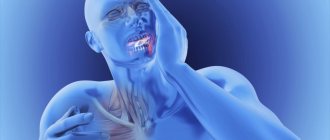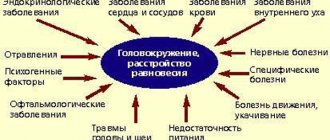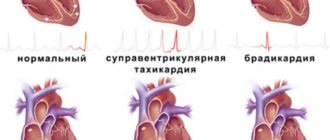Fog in the head, heaviness, squeezing, tapping in the temples, clouding of consciousness... With such symptoms, people are increasingly turning to the doctor.
As medical practice shows, this condition has many causes. The most common are: astheno-neurotic syndrome, circulatory disorders in the brain and cervical osteochondrosis.
We will talk further about what fog in the head means and why it occurs.
Features of treatment
Symptoms such as cloudiness, dizziness, heaviness, a feeling as if the head is in a fog, can accompany a person constantly or appear several times a week.
This condition does not always mean that a person has any disease. Often these signs arise due to the influence of certain factors: changes in weather conditions, excessive physical exertion, lack of sleep, mental work, etc.
The main feature of the brain fog symptom is its sudden appearance. So, a person who felt good a minute ago, almost in an instant feels discomfort, fogginess, dizziness, blurred vision, dullness of consciousness.
The problem is that these symptoms can appear in the workplace or while performing an important task. Due to this, a person is deprived of the opportunity to carry out usual activities.
Brain fog is often accompanied by various symptoms:
- increased or decreased blood pressure;
- drowsiness during the day and sleep disturbance at night;
- weakness;
- headache;
- strong heartbeat;
- excessive sweating, etc.
Often this picture is accompanied by a feeling of unreasonable fear, a feeling of lack of air, and the appearance of a ringing in the head. There are many reasons for this condition.
If a patient constantly complains that he has a heavy head, the causes of discomfort are vegetative-vascular dystonia, osteochondrosis or another disease, it is best to entrust treatment to a specialist. The following therapeutic measures are carried out:
- Cerebral circulation is normalized with the help of nootropic and vasotropic drugs.
- Blood circulation is improved with the help of physiotherapy: electropheresis, phonopharesis, and magnetic therapy are used.
- Muscle spasms in cervical osteochondrosis are relieved through massage and manual therapy.
- Nervous tension is eliminated - with the help of tranquilizers, sedatives, sedatives.
- To relieve muscle spasms, muscle relaxants are taken, non-steroidal anti-inflammatory gels and ointments are applied topically.
- Allergic reactions are relieved with antihistamines.
If the cause of discomfort is the growth of a tumor, surgical intervention may be required.
In case of dysfunction of the cardiovascular system, it is necessary to strengthen blood vessels and normalize blood pressure. If the discomfort is due to a cold, the patient’s condition will return to normal after recovery.
Regular use of painkillers is required only if the heaviness in the skull is accompanied by a headache. It is advisable not to rely only on medications, but also to change eating habits and give preference to natural products. Spicy, salty, sour foods can increase discomfort, as can caffeinated drinks and chocolate.
Do you want the heaviness in your head to go away? Play sports, preferably swimming. It helps not only to get a feasible load on all muscle groups, but also to relieve accumulated negative emotions, “wash away” stress and a depressive mood. Walking in the fresh air, good sleep and the absence of nervous overload will help avoid unpleasant sensations.
There are several types of manifestations of brain fog. They are classified based on the primary causes.
Dizziness, cloudiness, heaviness can accompany people constantly or appear periodically. If your head is in a fog, this will not always indicate the development of some kind of disease. Very often, such a symptom is observed due to the influence of certain factors, for example, excessive physical exertion, changes in weather conditions, mental work, lack of sleep and much more.
The main feature of the symptom, when the head is in a fog, is its unexpected appearance. For example, if a person felt very good a minute ago, then almost in an instant he begins to experience discomfort, dizziness, fogginess, dullness of consciousness and blurred vision.
The whole problem with feeling like your head is in a fog is that the symptom can manifest itself while performing some important task or at the workplace. For this reason, the patient is deprived of the opportunity to carry out his usual activities. Dizziness and foggy head may be accompanied by other symptoms, for example:
- Low or high blood pressure.
- Weakness.
- Drowsiness during the day and sleep disturbances at night.
- Headache.
- Palpitations.
- Excessive sweating.
Quite often, such a picture is accompanied by unreasonable fear, a feeling of lack of air, and also the formation of ringing in the head. There are many different causes of brain fog. A list of them will be described below.
Types of manifestations according to causes
There are several types of manifestations of brain fog. They are classified based on the primary causes.
Neurogenic factors
Neurogenically mediated brain fog with dysregulation of blood pressure is a manifestation of vagotonia. Sometimes the symptom occurs reflexively - in pain, after passion, for psychological reasons (fear, looking at blood, etc.). Prodromes, nausea, sweating, shortness of breath, low blood pressure, and rapid heartbeat often occur.
This group includes urinary-related brain fog that occurs in men during or after urination (mostly without prodromes).
Cerebrovascular factors
A frequent provocative moment is tilting or turning the head. This disorder is more common in older people. In young people it is called cervical syncope. The disorder is manifested by a violation of proprioceptive and autonomic innervation in the cervical spine. At the same time, the back of the head may hurt; the pain often radiates to the arm.
Disorders in the carotid artery usually do not cause such conditions, but only in the absence of concomitant vertebrobasilar insufficiency.
Orthostatic (postural) hypotension
Brain fog usually occurs in an upright position, most often after standing for a long time, sometimes after sleep. Occurs in vegetatively labile individuals, with disorders of the autonomic system (autonomic dysfunction in parkinsonians, some polyneuropathies, etc.), can be mediated by drugs (phenothiazines, antihypertensive drugs, vasodilators, L-dopa, diuretics), dehydration.
Sometimes the disorder manifests itself only as dizziness, usually in an upright position. In other cases, it may be difficult for a person to focus his vision and “catch” a thought.
Cardiac factors
Fog in adults and even children can occur with a number of heart disorders, including:
- heart rhythm disturbance;
- heart rate is too high or low;
- valve defect;
- aortic stenosis;
- ischemic disease;
- acute myocardial infarction;
- pulmonary embolism.
Valsalva mechanism
Darkness in the head when coughing occurs due to increased intrathoracic pressure, causing a decrease in venous return to the heart. This disorder is most common in patients with chronic bronchitis. In addition to coughing, the symptom causes a burst of laughter. Sometimes in such situations my ears become blocked.
Psychogenic factors
After passion, with hysteria, sometimes with hyperventilation tetany, short-term memory impairment, drowsiness, and fog in the head may occur. It can be difficult for a person to think.
Etiopathogenesis
The brain functions like a constantly running computer. When exposed to discomfort, he will begin to limit some of his actions. One of them is a sense of consciousness, conscious presence. Lack of oxygen, nutrients in the brain, accumulation of metabolic waste, and toxins are factors that lead to fainting, blurred vision, and a foggy state.
Treatment of astheno-neurotic syndrome
If there is no clarity in the head, then this may indicate astheno-neurotic syndrome. This pathology, in addition to constant fog in the head, is accompanied by other symptoms:
- Problems falling asleep.
- Superficial sleep.
- Suspiciousness, irritability, hot temper.
- Fast fatiguability.
- Unreasonable anxiety.
- Daytime sleepiness.
- Decreased ability to work.
- Feeling of a lump in the throat.
- Memory problems.
- Stiffness of movements.
- Dizziness.
- Constrictive headaches.
- Tremor of the limbs.
In most cases, this syndrome affects people who are mentally stressed. In addition, this pathology often affects those who have an unstable psyche.
The main causes of astheno-neurotic syndrome are prolonged stress, prolonged nervous tension, anxiety, chronic lack of sleep, and overwork. In addition, pathology can occur in people who have the following diseases and ailments:
- Various chronic diseases.
- Hypertension.
- Vegetovascular dystonia.
- Poisoning.
- Acute viral infection.
- Avitaminosis.
- Head injuries.
- Bad habits.
The syndrome develops over time. At the initial stage of its development, a person feels weak in the morning, restlessness and mild irritability. After this, in the absence of medical intervention, other symptoms appear in the form of sleep disturbances, loss of strength, memory problems, heaviness in the head, a feeling of futility, the appearance of fog in the eyes, as well as decreased ability to work.
After this, pain in the heart sets in, excessive irritability gives way to weakness, appetite disappears, mood and libido decrease, apathy appears, and the patient constantly thinks about the state of his health. As a rule, such people develop a fear of death. Ignoring such symptoms can lead to mental illness.
This disease can be cured using psychotherapeutic methods. However, provoking factors should also be excluded at the initial stage of therapy: lack of sleep, stress, mental stress and excessive physical activity. If you do not reduce the influence of these factors, then drug treatment and psychotherapy will not have the desired effect and will not eliminate the unpleasant symptom.
Medicines are used in severe cases. The most effective are sleeping pills, restoratives, antipsychotics, antidepressants and tranquilizers.
Treatment
If the cloudy head appears due to lack of sleep, and the symptom is temporary, then just rest and get enough sleep.
If this symptom occurs regularly, measures should be taken to avoid complications. First of all, you need to see a doctor and find out the cause of the feeling of fog in your head.
If the source is astheno-neurotic syndrome, then it can be cured using psychotherapeutic methods. But first, you should exclude all provoking factors - stress, lack of sleep, excessive physical and mental stress.
If the influence of these factors is not reduced, then psychotherapy and drug treatment will not have the desired effect and will not eliminate unpleasant symptoms.
Medicines are used in severe cases. General restoratives, sleeping pills, antidepressants, antipsychotics and tranquilizers are considered effective.
If you have symptoms of VSD, you should consult a specialist. The therapist deals with this issue. To relieve symptoms, various medications are used - sedatives, sleeping pills, drugs for dizziness, to normalize blood pressure, etc. In addition to drug therapy, it is recommended to adjust your lifestyle:
- engage in light, non-competitive sports;
- learn to eat right;
- travel outside the city more often or simply go outside, taking long walks;
- eliminate stress factors;
- learn to go to bed and wake up at the same time;
- give up bad habits.
Physiotherapeutic procedures, acupuncture, and massage will help get rid of the fog in the head with VSD.
The symptoms of neurosis will be eliminated by drugs that normalize the activity of the autonomic nervous system, as well as drugs with a sedative effect.
In case of poor blood circulation in the brain, accompanied by fog in the head, medications with vasodilating and nootropic effects are prescribed. Pathology at the initial stage can be treated without drugs - with the help of massage and manual therapy.
Treatment of cervical osteochondrosis is aimed at relieving the inflammatory process and eliminating pain. For this purpose, NSAIDs, nerve blockade, and medications that normalize blood circulation are prescribed.
In addition to drug therapy, physiotherapy, physical therapy, massage, and manual therapy are recommended for people with cervical osteochondrosis.
What Causes Brain Fog?
This condition sometimes occurs in healthy people as a result of fear, shock, prolonged standing, or staying in one position. But with a cloudy head, the causes can also be represented by more serious diseases. If such problems occur frequently (more than once a month), consult a doctor.
Causes of brain fog in healthy people:
- Prolonged standing, which can also cause cramps. These symptoms may also indicate chronic venous insufficiency.
- Rapid changes in body position, for example when standing up from a sitting position. We are talking about orthostatic hypotension, which is a drop in blood pressure with a rapid change in posture. This condition can be supported by certain medications.
- Prolonged tilting of the head (for example, when looking at the sky), causing a decrease in blood flow to the head.
- Prolonged stay in a room with “heavy” air.
- Fright.
- Emotional excitement, nervousness.
- Swallowing.
- Defecation.
- Urination.
- Shaving or tying a tie.
- Phobias, looking at unpleasant things (blood, needles, arachnophobia, fear of heights, other phobias).
- Emotional trauma.
- Depression.
- Exhaustion.
- Dehydration.
- Intoxication.
- Sudden or severe pain.
- Severe cough, sneezing.
- Laughter.
- Poor or insufficient sleep.
- Playing sports in high ambient temperatures.
- Hormonal changes.
- Pregnancy (increased cardiac output).
For brain fog, causes may include medications. These include medications for hypertension, allergies, depression, and nausea.
Tablets that may make your head feel cloudy:
- opioid analgesics (at the beginning of use, as a rule, symptoms decrease over time);
- parasympathomimetics (by lowering blood pressure);
- sympatholytics used to reduce blood pressure, tachycardia (blocking norepinephrine receptors);
- antidepressants;
- combinations of antidepressants or their use with opioids - can lead to thought disorders, serotonin syndrome (CNS irritation, tremor, muscle twitching, impaired consciousness, hypertension, rapid heartbeat);
- diuretics.
Causes of Brain Fog
ADHD
People with ADHD tend to show differences in brain activity compared to those who are able to concentrate. It is believed that ADHD brain fog may be a result of low dopamine levels, low arousal, and an excessively slow brain wave rhythm. Because there are different types of ADHD, not everyone with the condition will have brain fog.
Alcohol
Drinking alcohol reduces arousal and depresses the central nervous system. If you have brain fog, drinking alcohol will likely make the problem worse. To regain clarity of mind, you need to give up alcohol for a while.
Anxiety
Anxiety can interfere with the ability to perform basic cognitive functions: memory retrieval and information processing. Additionally, many anxiolytic drugs that are used to treat anxiety tend to increase brain fog by suppressing activity in the central nervous system.
Brain damage
Any injury or damage to the brain can lead to cognitive decline. For example, if someone is in a serious accident and suffers a TBI (traumatic brain injury), they may experience severe brain fog. Other brain injuries can result from a stroke or a temporary loss of blood flow to the brain, causing damage.
Brain tumors
Any brain tumors or other damage to the brain can affect brain function. They are usually shown on an MRI. Depending on where the tumor is located, it can affect your consciousness differently. The location and size of the tumor affect the severity of brain fog and other mental processes.
Brain waves
If you connect an EEG to your brain, you can measure electrical activity, or the speed of your brain waves. Electrical or brain waves occurring throughout the brain may cause slow thinking or slow mental processing. An expert will easily be able to assess whether your EEG is “healthy” or “abnormal” based on the brain waves observed in certain regions. Typically, when a person has too slow brain activity, it is a sign of brain fog.
Diabetes
During hypoglycemia, or low blood sugar, brain fog can become a noticeable symptom. A person who has low blood sugar may appear depressed, speak nonsensically, or have noticeable problems with communication. The brain relies on glucose to provide energy. When glucose levels drop to low levels, the brain does not receive the fuel to function properly and brain fog occurs.
Nutrition
If you don't eat enough food, you are essentially depriving your brain of the energy it needs to function properly. The foods you eat give your body energy and help you think clearly. By eating enough food and eating a healthy diet, you give your brain the best opportunity to think clearly and stay focused.
Excessive physical activity
There are many psychological benefits of exercise, one of which may be improved concentration and healthy brain function. However, if a person overexerts himself physically by spending too much time in the gym, he will also tire himself out. If you notice that you feel mentally unstable after a long workout, it's probably related to your workout.
Hormonal imbalance
Various conditions can lead to hormonal imbalance. Illness, medications, and menopause can lead to hormonal fluctuations. There is evidence that hormonal changes can impair our thinking. Thus leading to brain fog.
Menopause
During menopause, hormone levels typically change. Changing hormones lead to increased fatigue and, in some cases, brain fog. If you experience foggy thinking during menopause, it's likely due to changes in hormone levels. In most cases, the fog subsides once the hormones return to homeostasis.
Multiple sclerosis
This is a disease in which the nerve cells responsible for protecting the brain and spinal cord are damaged. The damage affects the entire nervous system and usually impairs physical and mental functioning. This disease leads to ongoing neurological problems such as chronic fatigue, poor cognition, and severe brain fog—especially over long periods of time.
Neurodegenerative disorders
Various neurodegenerative disorders are known to cause brain fog. In cases of these specific disorders, typically the person loses brain function and exhibits structural changes in the brain. It affects all forms of cognition and makes it difficult to retrieve memories, process information, and learn. Most of these diseases are thought to be influenced by genetic factors and can kill brain cells or permanently impair cognitive function.
Neurotransmitters
A person with a neurotransmitter imbalance may experience symptoms of brain fog. Usually, when an imbalance occurs, it is very difficult for a person to think clearly. This is especially common when a person comes off an antidepressant and experiences a chemical imbalance again. Brain fog can also occur when a person has abnormally low levels of dopamine production - as is the case with ADHD.
Treatment of vegetative-vascular dystonia
This disease is the most common reason for lack of clarity in the head, fog. However, you should pay attention to the fact that vascular dystonia is not a separate disease, but a combination of many symptoms that arise due to disruptions in the functioning of the human autonomic nervous system, which is responsible for the functioning of internal organs and systems. The disease is accompanied by the following symptoms:
- Dirty and head, as if in a fog.
- Dizziness.
- Anxiety.
- Headache.
- Stomach pain, nausea.
- Unfounded fears.
- Lack of air.
- Tachycardia.
- Unsteadiness when walking.
- Tremor of the limbs.
- Insomnia and shallow sleep.
- Irritability.
- Changes in blood pressure.
- Floaters before the eyes.
- Severe ringing in the ears.
The list of symptoms of vegetative-vascular dystonia can be endless. In addition to the fact that a person develops a fog in the head, there is no clarity of thinking with this illness, it should be noted that panic attacks appear. If the patient does not take any measures, does not strive for changes in lifestyle, or does not seek help from a doctor, this can provoke the emergence of various fears and phobias.
So, we figured out that the head is in a fog - this can be a symptom of vegetative-vascular dystonia. To eliminate it, you need to seek help from a doctor. To relieve symptoms, various medications are used: sleeping pills, sedatives, drugs for dizziness, as well as medications to normalize blood pressure.
Also very effective in the fight against this disease are physical procedures, massage, and acupuncture.
Symptoms
Brain fog is often preceded (or accompanied) by the following symptoms:
- extreme fatigue;
- dizziness;
- heartbeat;
- dyspnea;
- anxiety;
- nausea;
- blurred vision;
- inability to concentrate;
- tremor;
- excessive sweating.
For some people, these symptoms worsen during eating, heat, exercise, or strenuous activity. Increased symptoms are typical for women during menstruation.
If the above symptoms appear, you must act quickly to prevent possible fainting. At home, it is recommended to take a horizontal position and raise your legs. On the street, it is advisable to ask passers-by for help.
Lack of oxygen
If the human brain begins to lack oxygen, this can trigger a feeling of brain fog. For this reason, hypoxia develops due to compression of the vessels through which the blood must carry oxygen, as well as all the necessary substances to nourish the organ. In addition to fogginess, a person experiences other symptoms:
- Weakness.
- Dizziness.
- Decreased ability to work.
- Heaviness in the head.
- Bad memory.
- Unclear consciousness.
- Slow reaction.
- Problems with information perception.
- Fatigue, severe weakness.
Brain Fog Treatment
Below is a list of things that can cure brain fog. Understand that some items, such as stimulants and caffeine, tend to act only as short-term medications, providing only relief. In the long term, you should avoid stimulant medications because you will eventually build up a tolerance to their effects.
Avoid drinking alcohol . Alcohol is known to be a CNS depressant and is known to reduce your activity and motor skills. If you're trying to avoid brain fog, you should reduce (or stop) your alcohol intake.
Nutrition . Are you eating enough food during the day? The brain needs energy to function properly. If you don't provide it with the nutrition it needs, your clarity of thinking and focus will suffer. Many mental illnesses and cases of brain fog are caused in part by poor diet.
Sports . The psychological benefits of exercise go beyond improving your mood. In many cases, enough exercise can improve our ability to think and learn new things. Additionally, cardio exercise is associated with neurogenesis (the growth of new brain cells).
Nootropics . Nootropic drugs not only clear up brain fog, but also improve brain and body health. This site is dedicated, for the most part, to nootropic drugs. Check out the different categories. Here you can find comprehensive information about these drugs.
Dream . Try to sleep 6-8 hours a day. This is the norm for most people.
Reducing stress . If you experience constant stress due to your environment, lifestyle, or circumstances, make a conscious effort to reduce it.
Work time . How many hours do you work per week? If you overwork yourself and don't get enough time to recover, you'll have to cut back on work to regain your strength and sanity.
Diagnostics
A detailed medical history is important for a correct diagnosis. It must contain an accurate description of the event, prodromes, symptoms preceding it and other information. It is also important to find out how often brain fog occurs and whether individual cases have common features.
The history should include the following information:
- type of imbalance, improving and worsening factors;
- provocative moments, the onset of instability (acute, slow);
- duration of progression (minutes, days, months, years);
- course (continuous, progressive, episodic); for episodic manifestations - duration of the attack;
- accompanying symptoms (vegetative, auditory, neurological, others);
- history of somatic and psychiatric comorbidities, medications used.
From the anamnesis and clinical examination we can distinguish:
- signs indicating damage to the vestibular system;
- ataxia as a result of damage to the cerebellum, proprioceptive pathways, and vestibular system;
- disturbances in stability due to damage to the basal ganglia, frontal cortex;
- nonspecific or presyncopic states of imbalance caused by cardiovascular, metabolic, and autonomic causes.
The doctor may also ask about medications you take regularly or occasionally.
Family history includes information about the presence of sudden deaths in the family, especially at a younger age. Cardiac activity is also monitored using ECG and blood pressure is monitored.
If a person experiences a feeling of foggy consciousness, often has a unclear head, or headaches, it is necessary to visit a neurologist. It is this specialist who, after examining the patient and listening to his complaints, suggests undergoing additional examination or refers him to a specialist. Possible diagnostic methods:
- Ultrasound of the vessels of the head and neck.
- Angiography of cerebral vessels.
- CT and MRI of the head, cervical spine.
If the development of astheno-neurasthenic syndrome is suspected, the person will be referred to see a psychotherapist. If circulatory disorders are caused by neurasthenia, the patient may additionally be advised to undergo rheoencephalography.
If fogginess in the head appears constantly, then this is a reason to urgently consult a doctor. Therapists, neurologists, and psychotherapists deal with this issue.
Before prescribing treatment, the doctor must interview the patient and find out what additional symptoms he has, as well as conduct a diagnosis. Here is a list of mandatory tests needed to find out why fuzzy head syndrome occurs:
- General analysis of urine and blood. Exclude the presence of inflammatory reactions and infectious processes.
- Ultrasound of blood vessels in the cervical spine.
- CT or MRI of the spine and brain. An MRI and CT scan will allow you to exclude malignant processes, determine the condition of blood vessels, identify the presence of chronic diseases of the nervous system, etc.
- Angiography of cerebral vessels.
The patient may also need to consult other specialists.
Osteochondrosis of the cervical spine
Patients suffering from osteochondrosis of the cervical spine are faced with various manifestations of the disease. These include pain radiating to the arm and occipital region, and severe headaches. But perhaps one of the most traumatic symptoms is dizziness.
Medicine calls common dizziness in cervical osteochondrosis cochleovestibular symptoms. The main cause of dizziness is insufficient cerebral blood supply due to compression of the vertebral artery.
The vertebral artery supplies blood to the cerebellum, hypothalamus, inner ear and brain stem structures. It arises from the subclavian artery and runs in a canal formed by the transverse processes of the cervical vertebrae.
Why does dizziness develop? Initially, due to degenerative processes or injuries, the working structure of a segment of the spinal system in the cervical region is disrupted. Fractures, dislocations and subluxations of the joints in the cervical spine are possible, leading to displacement of the vertebrae and changes in the lumen of the canal formed by the openings of the vertebral processes.
Compression of the artery leads to a decrease in blood flow and, as a result, to oxygen starvation of the tissues of the brain. All of the above leads to the manifestation of symptoms of SPA (symptoms of the vertebral artery) - dizziness, severe throbbing headache (sharp, burning, especially intense in the back of the head and temples), visual disturbances (darkening in the eyes, a feeling of sand, spots in front of the eyes, sparks).
Dizziness is observed in varying degrees, from slight swaying, with a slight disturbance of cerebral circulation, to so-called drop attacks, when a person falls when turning his head sharply, while consciousness remains intact. With severe brain disorders, there may be nausea, vomiting, and tinnitus.
At the moment, treatment of vertebral artery syndrome is a difficult task to solve, as evidenced by the many different treatment methods from different clinics and the lack of a single generally accepted treatment regimen. Here are the main directions in the treatment of vertebral artery syndrome:
- Anti-inflammatory and decongestant treatment.
- The use of drugs that normalize blood circulation in the brain. The use of neuroprotectors and metabolic therapy to protect brain nerve cells under conditions of oxygen starvation.
- In case of severe impairment of cerebral circulation, surgical treatment of cervical osteochondrosis is used to eliminate the causes of compression of the vertebral artery.
- Rehabilitation treatment, involving physical therapy, massage, acupuncture.
Severe headaches with cervical osteochondrosis are somewhat alleviated by painkillers, but this symptom can only be completely eliminated by eliminating osteochondrosis.
Prevention
What can be done to prevent disturbances in the stability of the body, a “drunk” state? First of all, identify the trigger, try to avoid it.
- Get up slowly.
- Tell your doctor if you experience any discomfort during blood draws or other medical procedures. He can take certain measures to prevent it.
- Eat regularly and drink enough water.
What to do if you experience frequent headaches?
It is important to find out the seriousness of the cause of this condition. It can warn of heart rhythm disturbances, narrowing of the aortic valve, heart tumors and other diseases. If discomfort is caused by medications that lower blood pressure, this should be discussed with your doctor and the dosage of the medication adjusted. But it is often enough to increase fluid intake, avoid prolonged standing, and exposure to direct sunlight.
Do you always feel a little drunk or drugged? This condition makes it difficult to concentrate, perform usual work, and may be accompanied by recurring headaches. To get rid of discomfort, it is necessary to establish the cause of its occurrence and try to eliminate it.
As stated earlier, the causes of brain fog may not always be due to health problems. Thus, when there are disruptions in the hormonal system, fog in the head is almost always observed. During pregnancy, a woman is often accompanied by this condition, as well as irritability and forgetfulness. The same symptoms may occur during menopause.








